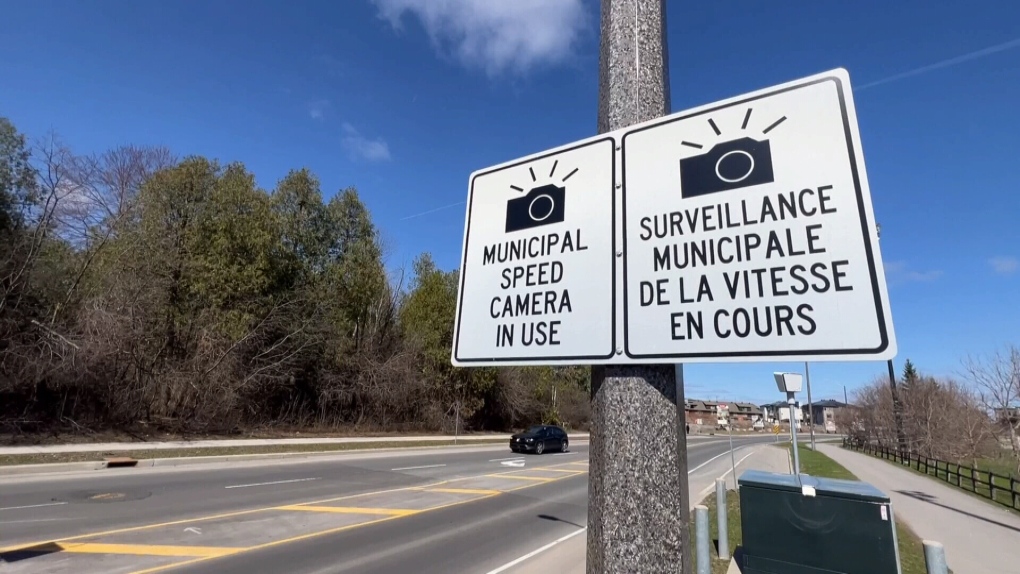
Data from the City of Ottawa indicate that photo radar cameras are influencing the habits of drivers in the capital.
Every month, thousands of tickets are issued to speeding drivers in areas where automated speed enforcement (ASE) cameras are installed. There are 40 cameras in operation right now, with plans for 20 more, and city staff say they appear to be making a difference.
“The ongoing evaluation of ASE sites indicates that the ASE program has significantly reduced speeds at the various sites. The change in the 85th percentile speed (the speed at which 85 percent of traffic is travelling or below), compliance, and per cent of high-end speeders has trended down and created safer driving behaviours and ultimately a change in road safety culture,” Kourouma said in a statement to CTV News Ottawa.
For example, in the area of Innes Road between Provence Avenue and Trim Road, where a camera was installed in 2020, the 85th percentile speed was 71 km/h in June 2020. The speed limit is 60 km/h. The percentage of high-end speeders (those travelling 15 km/h or more above the speed limit) was 6.1 per cent. By June 2024, the 85th percentile speed was cut to 60 km/h and the percentage of high-end speeders was reduced to 0.3 per cent. The camera issued 2,400 tickets in the first six months of 2021, and 1,580 in the first six months of 2024.
Eight photo radar cameras have been in place since 2020. Aside from Innes Road, there are also cameras on Longfields Drive between Highbury Park Drive and Via Verona Avenue, Bayshore Drive between Woodridge North Crescent and Woodridge South Crescent, Katimavik Road between Castlefrank Road and McGibbon Drive/Sewall Way, Watters Drive between Charlemagne Boulevard and Roberval Avenue, Ogilvie Road between Appleford Street and Elmlea Gate, Smyth Road between Haig Drive and Edgecomb Street, and Meadowlands Drive West between Winthrow Avenue and Thatcher Street.
The percentage of high-end speeders in each of those zones had dropped from between 3 and 12 per cent, depending on the area, to less than 1 per cent by June 2024 with the exception of Katimavik, where it was 1.1 per cent; however, the percentage of high-end speeders in that area was 12.2 per cent in August 2020.
The photo radar camera on King Edward Avenue between Cathcart Street and St. Patrick Street was installed earlier this year and quickly became Ottawa’s busiest, issuing tens of thousands of tickets since March.
In its short time in operation, data suggests it has had an impact. In March 2024, the 85th percentile speed was 46 km/h, just above the 40 km/h limit. By June, that had dropped to 42 km/h. The percentage of high-end speeders went from 2.9 per cent in March to 1 per cent in June.
Kourouma said data from photo radar cameras are used when determining future road designs.
“Many factors and data sets are referenced for future road redevelopment and/or traffic calming plans, including data used for Automated Speed Enforcement (ASE) sites. This includes posted speed limits, operating speeds, collision data, traffic volumes, and proximity to schools and parks,” Kourouma said.
“Ongoing monitoring of the sites will help to determine if further measures are required in future years.”
In areas that don’t have photo radar, every councillor has a budget dedicated to traffic calming projects. It is $75,000 per ward in 2024, with staff saying it will grow to a maximum of $100,000 per ward by 2026.
Since the per-ward budget was introduced in the previous term of council, more than 1,600 locations in the city have had some measure of traffic calming installed. These include pavement markings at 413 locations, 388 speed display boards, 370 locations with flexible stakes and cycling zone delineators and 19 new permanent speed humps.
During this term of council, councillors have access to the following temporary traffic calming measures:
• Flexible Stakes
• Cyclo-Zone Delineators
• Combination Flexible Stakes and Delineators
• Bulb-Outs with Delineators
• Temporary Median Island (with Delineators)
• Speed Pavement Markings
• Slow Pavement Markings
• School Pavement Markings
• No Exit Pavement Markings
• Stop Ahead Pavement Markings
• Edgeline Markings
• Thermoplastic Symbols
• Speed Display Boards
• Community Entrance Signage
• Slow Down for Us signs (Permanent)
• Gateway Speed Limit Signage
• Planter Boxes
• Pedestrian Crossovers (Warranted)
• Minor Roadway Deficiency Improvements
• Permanent Speed Humps
• Median Island/Pedestrian Refuge
The majority of these measures are aimed at reducing speeding, though some also improve safety for pedestrians or remind drivers of street signs.